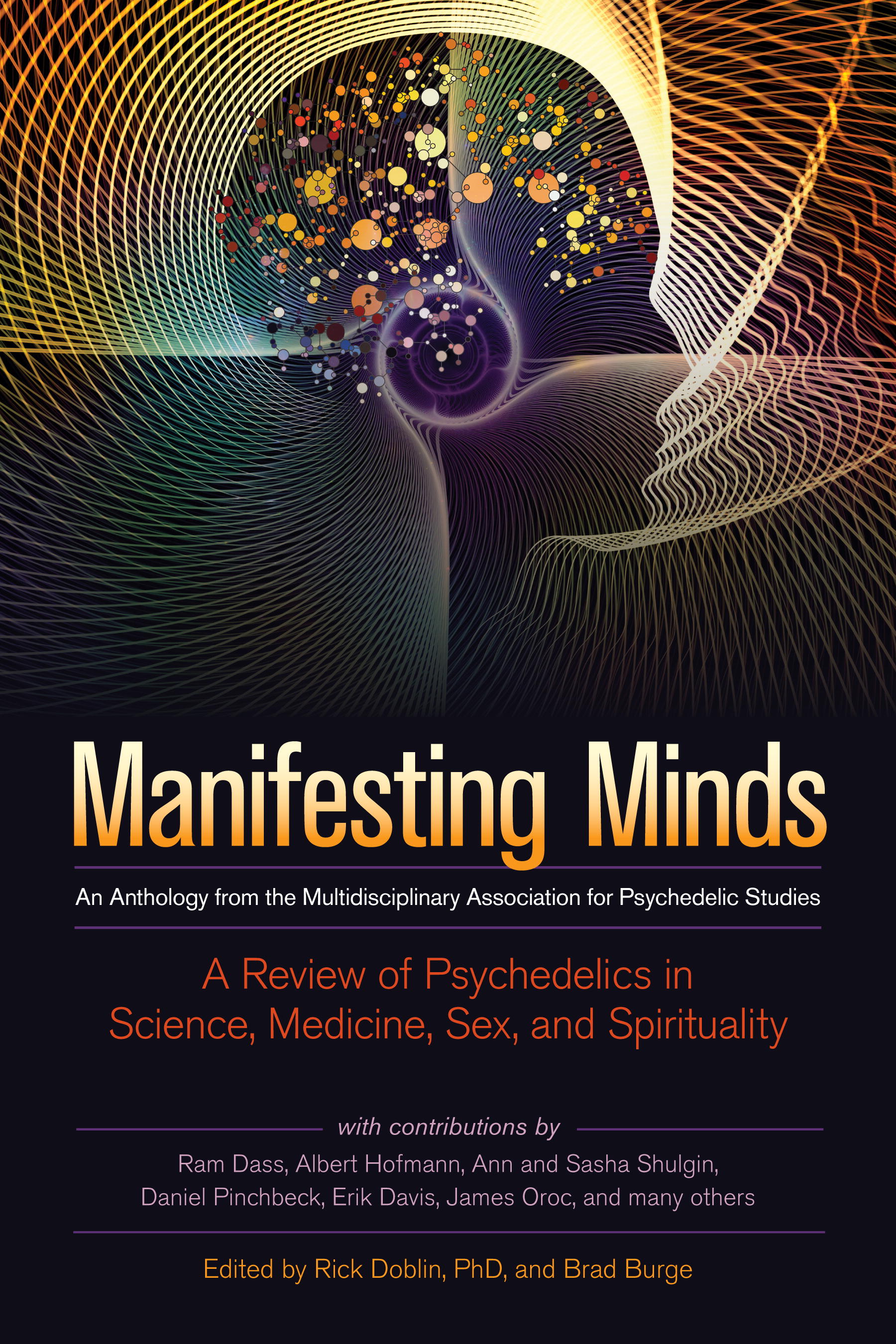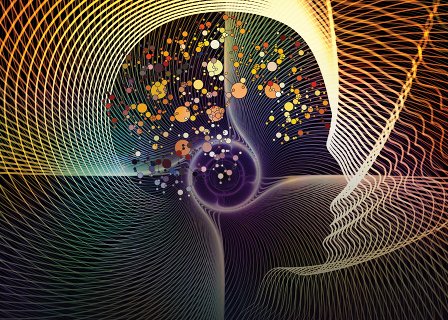The following on ayahuasca is excerpted from Manifesting Minds edited by Rick Doblin and Brad Burge, published by Evolver Editions/North Atlantic Books.
There is a growing amount of research on the development of PTSD and its various treatments. The fact that many people who suffer from PTSD struggle with the currently approved therapeutic options that are available to them suggests that we need to start exploring alternative strategies to treat this disorder (Strauss and Lang 2012). With the large number of veterans returning home from war who may have or will develop PTSD, we must have a diverse framework of psychedelic therapy and integration in place for them.
Alternative options that are currently being explored for the treatment of PTSD include MDMA-assisted psychotherapy (Mithoefer et al. 2010) and marijuana (Campos, Ferreira, and Guimaraes 2012). Current research indicates that ayahuasca mimics mechanisms of currently accepted treatments to PTSD, and its use as an alternative treatment for other types of disorders is also being considered (McKenna 2004). However, in order to understand the implications of ayahuasca in the treatment of PTSD, we need to understand how PTSD develops, which involves memory formation.

Memory can be divided into three types: perceptual memory, episodic memory, and semantic memory. Before it reaches conscious awareness, information from the outside world first passes through the sensory cortices of our brain. This is perceptual memory. Sensory input then travels up to higher processing regions. Within our limbic system lie the hippocampus and amygdala. The cognitive aspect of memory occurs in the hippocampus. There we are able to perceive the sensory information and form “episodic” memories. The amygdala links the episodic memory to the associated emotions (Stickgold 2002). At this stage, when an event is recalled the original sensations and emotions are replayed with it.
Over time, relevant information from episodic memory is transferred to the neocortex to create semantic memory networks. Here the information is integrated into your general knowledge, and becomes available for understanding events in the future. It is in the cortex that we assign meaning to our memories. A feedback loop from the cortex to the hippocampus then tells it to weaken the episodic memory (Stickgold 2002). The memory can then be recalled without provoking the original sensations and emotions.
In PTSD, the brain fails to appropriately consolidate and integrate episodic memories into the semantic memory system (Stickgold 2002). The memory and its associated emotions become trapped in the hippocampus, so that whenever the adverse memory is triggered it is recalled as if the traumatic event is being re-experienced. The resulting hyperarousal leads many trauma victims to develop mal-adaptive coping mechanisms. In an attempt to prevent stimulation of intense fear, they seek ways, such as substance abuse, to avoid or numb out to triggers.
The American Psychiatric Association (APA) outlines three approaches to the treatment of PTSD: psychopharmacology, psychotherapy, and education and support. The goal of treatment is to eliminate or decrease flashbacks, nightmares, and other intrusive symptoms, allowing avoidance and arousal symptoms to subside (Ursano et al. 2004). Successful recovery requires the disrupted process of cortical memory consolidation and integration to be reestablished. The patient must be able to discuss the traumatic event without replaying the original emotional intensity.
Once the images are no longer intrusive, the event can be integrated into regular life. Only then will the victim come to under- stand his or her past trauma, and thus come to terms with it (Harper 2012). In PTSD, the blockade of hippocampal outflow to the cortex needs to be reestablished so that the episodic memory can be weakened and the semantic memory created. Because it is limited to the cortical level of the brain, simple catharsis (expression of the trau- matic event) is not sufficient to successfully treat PTSD symptoms. Effective treatments must target the limbic system.
When using psychotherapeutic treatments, many professionals in the field believe fear must be experienced before it can be reduced or eliminated. Exposure therapy is considered to be any therapy where the client is exposed to a fear memory as part of the therapy (Harper 2012). With sufficient exposure, clients adapt to the trauma by altering its meaning in a way that desensitizes them to trauma- related triggers, thus reducing their experienced fear (Ursano et al. 2004).
Three types of exposure therapies that are recognized as evidence- based practice for treatment of PTSD include: prolonged exposure (flooding), cognitive restructuring, and eye movement desensitization and reprocessing (EMDR) therapy (Allen 2001). These exposure therapies target the emotional aspects of fear memories mediated by the amygdala. Stimulation to these areas releases the memories to the cortex so they can finally be processed and integrated into the victim’s life with meaning.
From the psychotherapeutic standpoint, ayahuasca is similar to exposure therapy. Intention setting is a common ritual in many ayahuasca practices. Users with traumatic histories have the opportunity to set their intentions to their traumas. Recent studies indicate that the amygdala, and other brain areas associated with emotional processing, is activated with the administration of ayahuasca (Riba et al. 2006). Activation of the amygdala, the very region of the brain that is the source of fear-associated symptoms of PTSD, is seen with ayahuasca as well as exposure-based approaches.
Due to the heterogeneity and complexity of PTSD, and to the variety of therapeutic options available including psychedelic-assisted therapy, it may be difficult to fully understand their nature and relationships to each other. The authors of this chapter propose a new approach to understand and assess them both. This approach is currently used by Dr. Nielson and her colleagues at the University of California, San Francisco, and uses bioinformatics to understand the complex nature (syndrome) of spinal cord injury and its potential therapies (Ferguson, Stuck, and Nielson 2011). This approach involves mining raw data from preclinical and clinical trials; incorporating them into a large, heterogeneous, and flexible database; running statistical pattern detection algorithms on it; and deriving novel patterns about the underlying biological mechanisms that are conserved across paradigms (Nielson et al. 2012).
By using this bioinformatic methodology on psychedelic therapies for PTSD, we hypothesize that we can both more accurately define the entire syndrome of PTSD (Ferguson, Stuck, and Nielson 2011), and assess appropriate therapeutic options for patients, including those still being tested in clinical trials (Mithoefer et al. 2010). Additionally, these methods enable us to rapidly visualize the syndrome space (Nielson et al. 2012), making this a very user- friendly and effective framework to identify various syndromes (Ferguson, Stuck, and Nielson 2011).
If we use this bioinformatics approach in combination with rapid data visualization and analysis, we hypothesize that we can identify risk factors for PTSD that may be a useful screening tool to assess whether a patient is ready for exposure therapy, and which treatment will be the best route to maximize his or her long-term recovery. Additionally, we can begin to address whether ayahuasca could be a beneficial therapy for PTSD by collecting data from subjects with PTSD who are voluntarily using it and assessing their recovery.
We have started a collaboration with the Paititi Institute near Iquitos, Peru (paititi-institute.org), who have already treated and will continue to treat patients with PTSD and other health disorders with ayahuasca. Our goal is to gather enough retrospective data from this center to provide rationale for an observational study and potential future clinical trials with ayahuasca for PTSD.

Additionally, numerous studies have been conducted to assess the safety of ayahuasca. Under the appropriate settings and with super- vision, and no prior consumption of contraindicated substances and foods (McCabe 1986) or pre-existing conditions, ayahuasca has been shown to be safe and nonaddictive (Gable 2007). In fact, it is being explored for its therapeutic potential from multiple perspectives and mechanisms, including the potential to treat substance abuse (McKenna 2004).
To ensure that the proper measures of caution are considered, it may be useful to prescreen interested participants and patients that want to take ayahuasca to treat their PTSD. Because there are contraindications for the monoamine oxidase inhibitor (MAOI) component (McCabe 1986) of ayahuasca, prescreening patients for the presence of these substances is important. Additionally, careful assessment during prescreening is important to determine whether the patient is ready for this kind of therapy, because exposure therapies run the risk of being re-traumatizing. These should be taken into consideration before taking ayahuasca. This is especially impor- tant for people with PTSD who may be on various medications.
This study into the therapeutic potential of ayahuasca for PTSD is in the preliminary stages. The initial connections in this frame- work have been made, and we welcome additional collaborators, data donors, and funders to contact us regarding working toward this project.
References
Allen, J. G. 2001. Traumatic Relationships and Serious Mental Disorders. Chichester, England: John Wiley & Sons.
Campos, A. C., F. R. Ferreira, and F. S. Guimaraes. 2012. “Cannabidiol Blocks Long-Lasting Behavioral Consequences of Predator Threat Stress: Possible Involvement of 5HT1A Receptors.”
J Psychiatr Res 46 (11): 1501–10.
Ferguson, A. R., E. D. Stuck, and J. L. Nielson. 2011. “Syndromics: a Bioinformatics Approach for Neurotrauma Research.” Transl Stroke Res 2 (4): 438–54.
Gable, R. S. 2007. “Risk Assessment of Ritual Use of Oral Dimethyltryptamine (DMT) and Harmala Alkaloids.” Addiction 102 (1): 24–34.
Harper, M. 2012. “Taming the Amygdala: an EEG Analysis of Exposure Therapy for the Traumatized.” Traumatology (Tallahassee FL) 18: 61.
McCabe, B. J. 1986. “Dietary Tyramine and Other Pressor Amines in MAOI Regimens: A Review.” J Am Diet Assoc 86 (8): 1059–64.
McKenna, D. J. 2004. “Clinical Investigations of the Therapeutic Potential of Ayahuasca: Rationale and Regulatory Challenges.” Pharmacol Ther 102 (2): 111–29.
Mithoefer, M. C., M. T. Wagner, A. T. Mithoefer, L. Jerome, and R. Doblin. 2010. “The Safety and Efficacy of {+/-}3,4-methylene dioxymethamphetamine-assisted Psychotherapy in Subjects with Chronic, Treatment-Resistant Posttraumatic Stress Disorder: the First Randomized Controlled Pilot Study.” J Psychopharmacol 25: 439.Nielson J. L., et al. 2012a. Paper presented at the National Neurotrauma Symposium. Phoenix, AZ.
Nielson J. L., et al. 2012b. Paper presented at the Society for Neuroscience. New Orleans, LA.
Riba, J., S. Romero, E. Grasa, E. Mena, I. Carrió, and M. J. Barbanoj. 2006. “Increased Frontal and Paralimbic Activation Following Ayahuasca, the Pan-Amazonian Inebriant.” Psychopharmacology (Berl) 186 (1): 93–98.
Stickgold, R. 2002. “EMDR: A Putative Neurobiological Mechanism of Action.” J Clin Psychol 58 (1): 61–75.
Strauss, J. L., and A. J. Lang. 2012. “Complementary and Alternative Treatments for PTSD.” PTSD Research Quarterly 23 (2).
Ursano, R. J., et al. 2004. “Practice Guideline for the Treatment of Patients with Acute Stress Disorder and Posttraumatic Stress Disorder.” Am J Psychiatry 161 (11 suppl.): 3–31.
Copyright © (2014). Reprinted by permission of publisher.
















